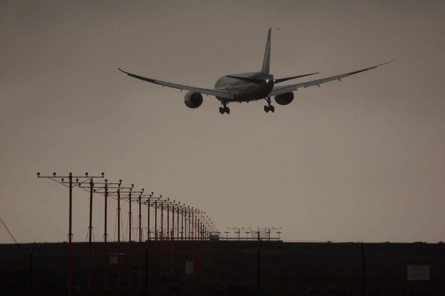Boeing is yet to be completely satisfied with crosswind testing of the 787 because the airframer is still looking for the opportunity to operate the twinjet in adequately strong gusts.
The aircraft has undergone testing in Iceland, but the manufacturer wants to assess the 787's handling characteristics in a more arduous regime.
"We haven't found the 'big wind' yet," said Boeing Commercial Airplanes chief test pilot Frank Santoni, speaking at the Royal Aeronautical Society in London as the company resumed flying its full 787 test fleet.
"We're looking for something around 50kt. We've been up to 28kt in this aircraft."
 |
|---|
© John Ostrower/Flightglobal |
He points out that the company "found 45kt" during the crosswind testing of the 777, adding that the aircraft was "done for 38kt".
Santoni detailed several aspects of the type's behaviour as revealed during the flight testing, but highlighted the parallels of its control laws to those of the 777.
"It's remarkable how similar the 787 and 777 are," he says. "We use the 777's fly-by-wire control laws as the basis for developing the 787's control laws, then add in features to make it more efficient and take weight out of the aircraft."
The 787, for example, has a "roll rate" command, and a similar function for its yaw axis. "By doing that, we can optimally design the aircraft so we don't have to account for very high roll rates," says Santoni, but adds that he would "challenge" any 777 pilot to detect differences between the types' flight characteristics.
Santoni says that 90% of normal procedures are the same as on the 777, while all the checklist and non-normal memory items are the same. Transition from 777 to 787 takes five days, compared with 13 days for other Boeing types, and 20 days for a full conversion.
He contrasts the pilots' experiences in the cockpit during high-alpha minimum-unstick tests of the 787 and the 747-8, when the tail is deliberately settled onto the runway on take-off.
While the crew could feel the "empty tube" of the freighter make the contact, Santoni states that the test in the 787 was "kind of a challenge" because of the pilots' lack of awareness that the tail was on the runway. Video images of the trial show the rear fuselage wavering for several seconds on rotation.
"They had a hard time in the 787 doing [the unstick test] because they couldn't feel it," says Santoni, suggesting that the composite structure may have been partly responsible.
Source: Flight International



















